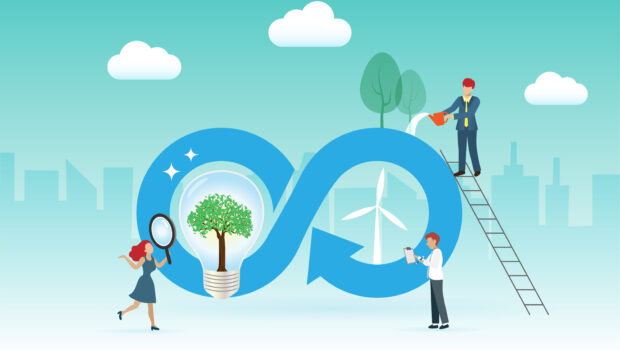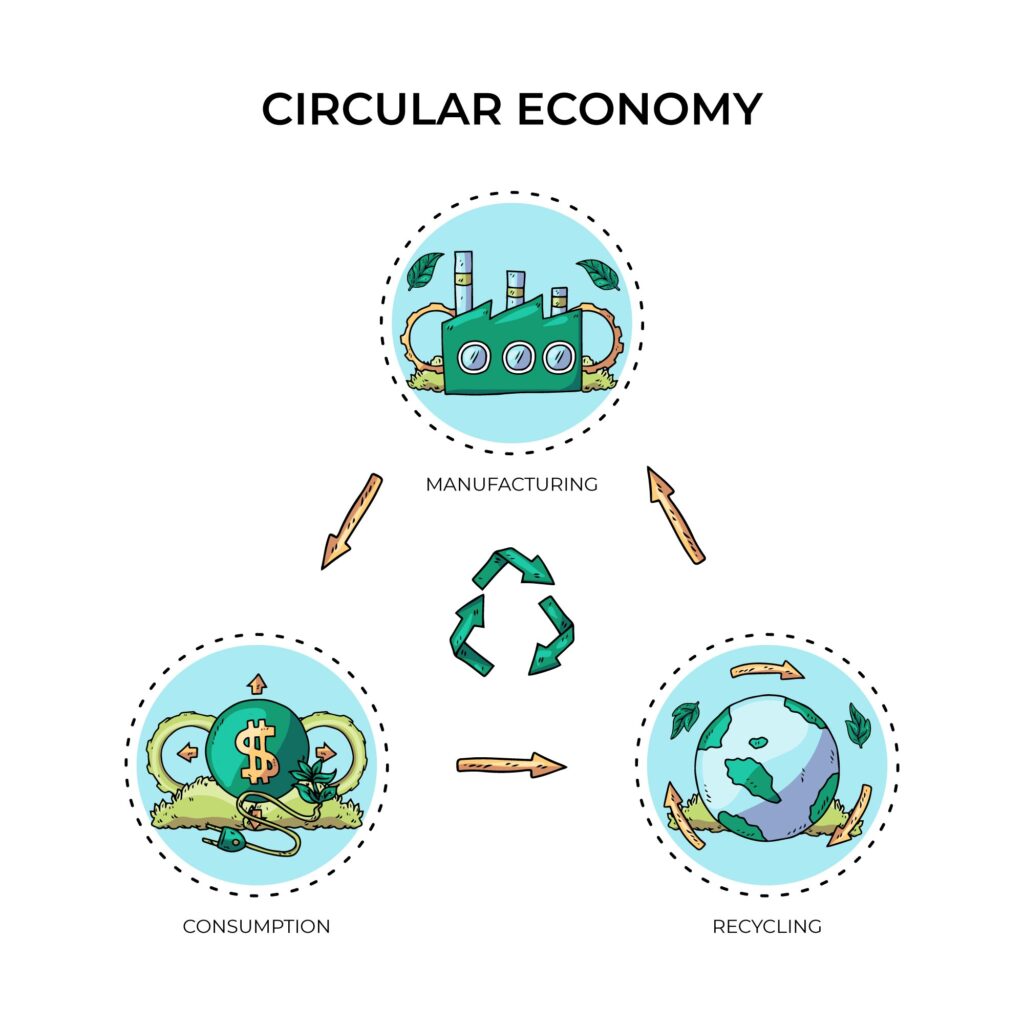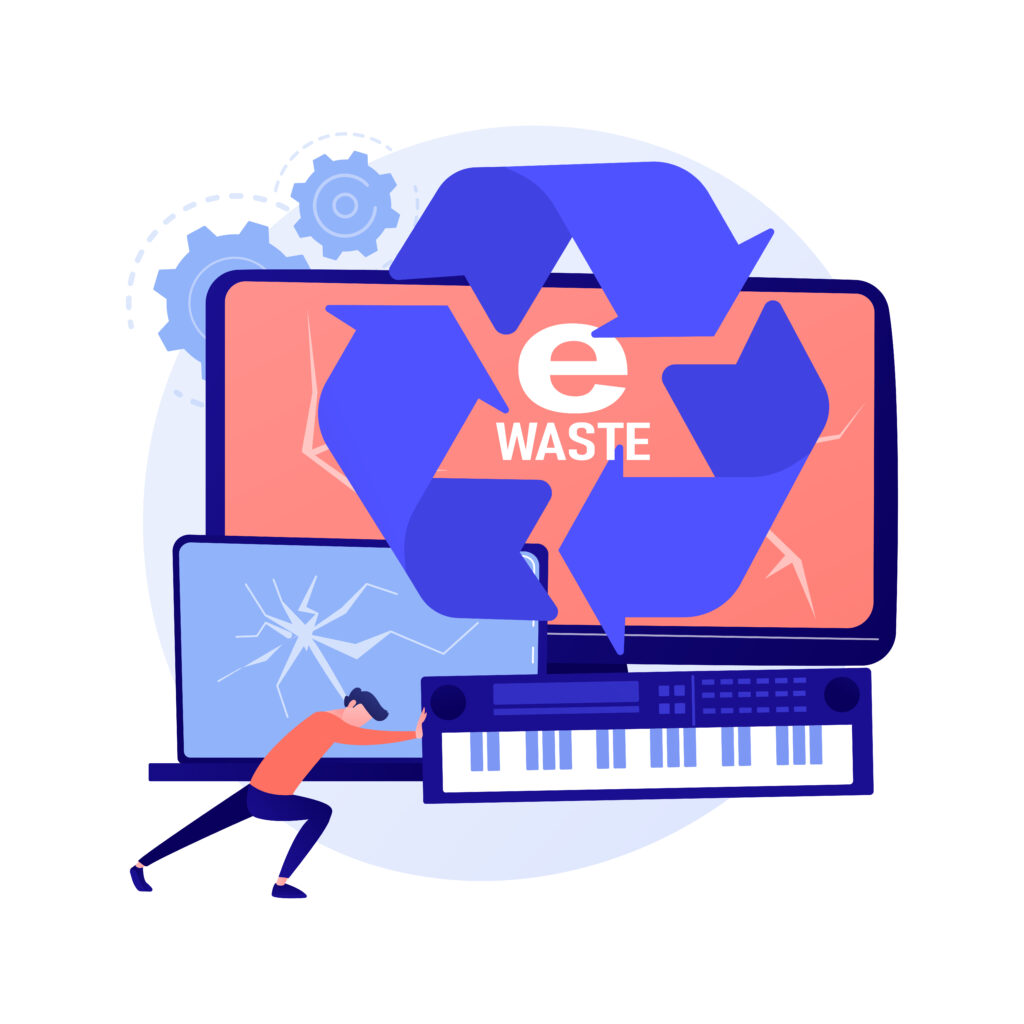Circular Economy, Do Something About It!
A circular economy is a material and process solution to a global problem: the need for sustainable production of goods. If you’re curious about what a circular economy is, why it’s essential, and what you can do to help create one in your workplace or community, check out this blog article!
What is a Circular Economy?
The circular economy is an economic system where businesses and individuals operate in a manner that is restorative or regenerative to the environment. In a circular economy, materials and resources are used more efficiently, minimizing waste. The goal is to create a system in which there is no waste and resources are used sustainably.
There are benefits to adopting a circular economy model. For businesses, it can lead to increased efficiency and decreased costs. For consumers, it can lead to greater access to goods and services and increased satisfaction from using products that are not harmful to the environment.
The concept of a circular economy is still relatively new, but many businesses and organizations are already working towards its implementation.
Principles of a Circular Economy
A circular economy is an alternative to a linear economy, and by using this form of economy, we utilize resources for as long as possible before recovering and regenerating them.
This regenerative approach is based on three principles:
1. Design out waste and pollution
2. Keep products and materials in use
3. Regenerate natural systems and biodiversity
We can design products and materials to be disassembled for recycling or composting at the end of their service life and prepare our factories to maximize output, minimizing waste. And, we can integrate our supply chain, designing out waste by designing in circularity.
Benefits of a Circular Economy
There are benefits to putting a circular economy into place, and it’s essential to be aware of them so that we can make the most of this new way of thinking. Here are just a few benefits of implementing a circular economy:
- Less waste – One of the main aims of a circular economy is to reduce waste. By design, a circular economy keeps products and materials in use for as long as possible, and then they can be easily recycled or reused. This reduces the waste that goes to landfill or is incinerated.
- Reduced reliance on resources – A vital part of a circular economy is using resources more efficiently. We can reduce our dependence on resources by using them more efficiently, which is important given the finite nature of many resources.
- Improved economic performance – Circular economy can lead to improved economic performance, as it can create jobs and generate revenue from reusing and recycling materials. Additionally, businesses can save money by becoming more resource efficient.
- Environmental benefits – As well as reducing waste and improving resource efficiency, a circular economy can also have positive environmental impacts. For example, it can help reduce greenhouse gas emissions and water pollution.
- Increased social benefits – A circular economy can lead to improvements in human health and wellbeing and greater opportunities for people with disabilities.
eWaste and its Importance
eWaste is a huge problem in our world today; millions of tons of electronic waste are produced every year, and most of it ends up in landfills or incinerators. This is harmful to the environment and also means that valuable resources are being wasted.
A circular economy is one way to address this problem. Products are designed differently, to be reused or recycled instead of being thrown away. This both reduces waste and helps to conserve resources. When we use resources again and again instead of discarding them after a single use, it means less waste for landfills and incinerators because there will be fewer things to throw away.
Ways to Reduce Waste
One way to reduce waste is by recycling. This can be done with items like paper, plastic, and metal. Are you aware you can also recycle things like clothes and electronics? By recycling these items, we can keep them out of landfills where they’ll just sit and take up space.
We can reduce waste by composting. This process is where organic materials (like food scraps) are broken down into a soil-like substance used to fertilize plants. Not only does this reduce the waste going into landfills, but it also helps improve the quality of our soil.
Finally, one last way to reduce waste is by reducing the amount of stuff you buy in the first place. This might mean buying second-hand items or simply being more mindful about the things you purchase. There are selling platforms like Gizmogo where you can sell and buy used electronics to help minimize waste and go green!
Conclusion
The circular economy is an important concept we all need to be aware of. It’s a more sustainable and environmentally friendly way of thinking about the economy. Please do your part to help make it a reality.
Cover Image by Freepik


















